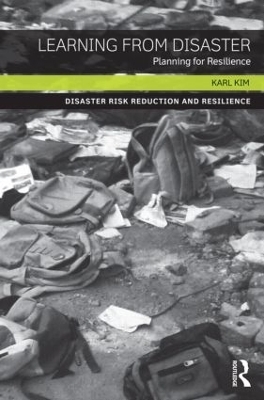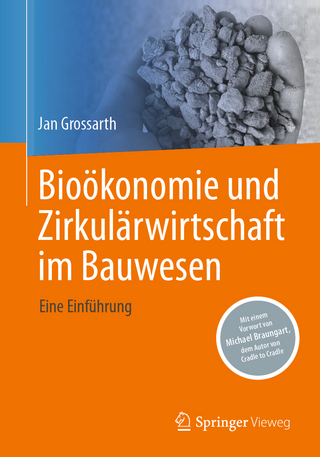
Learning from Disaster
Planning for Resilience
Seiten
2024
Routledge (Verlag)
978-0-415-66208-6 (ISBN)
Routledge (Verlag)
978-0-415-66208-6 (ISBN)
- Noch nicht erschienen (ca. Dezember 2024)
- Versandkostenfrei innerhalb Deutschlands
- Auch auf Rechnung
- Verfügbarkeit in der Filiale vor Ort prüfen
- Artikel merken
Learning from Disaster: Planning for Resilience is the first book of the Disaster Risk Reduction and Resilience series and offers an interdisciplinary approach to the planning and redesign of cities following catastrophic events. With international cases, toolkits, and exercises throughout, this book provides learning opportunities for both students and professionals in the fields of urban and regional planning as well as emergency and disaster management.
The rebuilding of downtown Hilo, Hawaii following several devastating tsunamis, the evacuation of communities before Hurricane Gustav, hurricane preparedness in Florida and Cuba and the recovery of New Orleans (after Katrina) and Japan (following the Kobe and Tohoku earthquakes) provide different ways of understanding preparedness, response and recovery. Participatory planning is an essential ingredient for success. While national, state, and local laws, policies, guidance, and approaches to disaster management are useful, it is also important to encourage flexible, creative problem-solving and innovative decision-making to save lives, reduce injuries, and minimize the loss of property and disruption following catastrophic events.
Learning from Disaster also focuses on the hard work of recovery, rebuilding and regenerating cities following disaster. In addition to the return to “normalcy” or pre-disaster levels of functioning, recovery should enhance the safety and sustainability of places. Included are strategies for increasing resilience so that communities are better able to withstand harmful events, recover quickly, and learn to be better prepared for disaster. Global environmental change, coupled with hydrometeorological, geophysical and manmade hazards will make planning for resilience and learning from disaster all the more urgent and central to our survival.
The rebuilding of downtown Hilo, Hawaii following several devastating tsunamis, the evacuation of communities before Hurricane Gustav, hurricane preparedness in Florida and Cuba and the recovery of New Orleans (after Katrina) and Japan (following the Kobe and Tohoku earthquakes) provide different ways of understanding preparedness, response and recovery. Participatory planning is an essential ingredient for success. While national, state, and local laws, policies, guidance, and approaches to disaster management are useful, it is also important to encourage flexible, creative problem-solving and innovative decision-making to save lives, reduce injuries, and minimize the loss of property and disruption following catastrophic events.
Learning from Disaster also focuses on the hard work of recovery, rebuilding and regenerating cities following disaster. In addition to the return to “normalcy” or pre-disaster levels of functioning, recovery should enhance the safety and sustainability of places. Included are strategies for increasing resilience so that communities are better able to withstand harmful events, recover quickly, and learn to be better prepared for disaster. Global environmental change, coupled with hydrometeorological, geophysical and manmade hazards will make planning for resilience and learning from disaster all the more urgent and central to our survival.
Foreword Acknowledgements Acronyms Chapter 1. Learning from Disaster Chapter 2. The Urbanization of Disaster Chapter 3. The Planning Perspective Chapter 4. The Discipline of Disaster Management Chapter 5. Preparing for the Inevitable Chapter 6 Crisis Response Chapter 7. Robust Tools for Decision-making Under Uncertainty Chapter 8. Evacuation Chapter 9. Sheltering and Humanitarian Assistance Chapter 10. Recovery Chapter 11. Conclusion: Huge Challenges Ahead
| Erscheint lt. Verlag | 1.12.2024 |
|---|---|
| Reihe/Serie | Disaster Risk Reduction and Resilience |
| Zusatzinfo | 32 Tables, black and white; 8 Line drawings, black and white; 20 Halftones, black and white |
| Verlagsort | London |
| Sprache | englisch |
| Maße | 156 x 234 mm |
| Themenwelt | Naturwissenschaften ► Biologie ► Ökologie / Naturschutz |
| Naturwissenschaften ► Geowissenschaften ► Geografie / Kartografie | |
| Sozialwissenschaften ► Soziologie | |
| ISBN-10 | 0-415-66208-7 / 0415662087 |
| ISBN-13 | 978-0-415-66208-6 / 9780415662086 |
| Zustand | Neuware |
| Haben Sie eine Frage zum Produkt? |
Mehr entdecken
aus dem Bereich
aus dem Bereich
Buch | Softcover (2024)
Springer Vieweg (Verlag)
49,99 €


